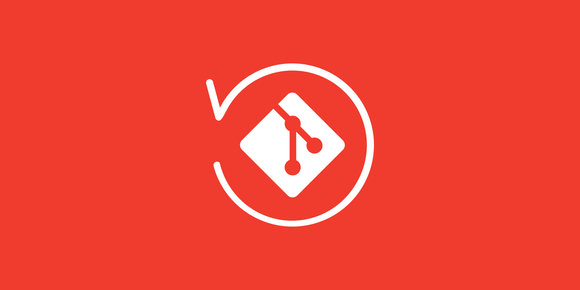Pin Your GitHub Actions to Protect Against Supply Chain Attacks

Pinning third-party GitHub Actions to a commit SHA helps protect you against supply chain attacks.
If you've written a GitHub Actions workflow before, then you've probably used a third-party action (an action that lives in another repository other than your own). Even the GitHub-published actions/checkout is considered "third-party":
on:
pull_request:
jobs:
do-something:
runs-on: ubuntu-latest
steps:
# This is a "third-party" action
- uses: actions/checkout@v5
# This is a "private" action
- uses: ./.github/actions/my-custom-actionMost examples you see online (and even most actions' READMEs) recommend specifying a major version number, such as actions/checkout@v5 in the example above. This version corresponds to a Git tag name, which is typically created by a GitHub Release. For actions/checkout@v5, the latest tag for v5.x.x as of writing is v5.0.0 .
Note: you can specify a Git branch name such as actions/checkout@main, but nearly no one recommends this, as it doesn't protect you from breaking changes between major versions.
Here's the problem with specifying a Git tag or Git branch: they can change, they're "mutable." (Though if you're an Actions author, please consider turning on immutable releases for all your repositories.)
If an attacker gains access to a GitHub account that publishes actions, they can commit malicious code and then update any or all of the existing Git tags to point to that new malicious commit SHA.
This exact scenario happened in March 2025 when the popular tj-actions/changed-files action was compromised. More than 350 Git tags were updated to a commit that attempted to dump the runner's secrets. More than 23,000 repositories were affected by this attack.
Solution
So what can you do to protect yourself? Follow GitHub's "secure [actions] use reference " and "pin" actions to their commit SHA. Updating our example above, that looks like this:
on:
pull_request:
jobs:
do-something:
runs-on: ubuntu-latest
steps:
# This is a "third-party" action
- uses: actions/checkout@08c6903cd8c0fde910a37f88322edcfb5dd907a8 # v5.0.0
# This is a "private" action
- uses: ./.github/actions/my-custom-actionGit tags correspond to a single, specific commit. Because the maintainers of actions/checkout publish releases, you can easily see v5.0.0's associated commit SHA on the web page. We can also find it with GitHub's REST API:
$ curl --silent https://api.github.com/repos/actions/checkout/tags \
| jq '.[] | select(.name == "v5.0.0") | .commit'
{
"sha": "08c6903cd8c0fde910a37f88322edcfb5dd907a8",
"url": "https://api.github.com/repos/actions/checkout/commits/08c6903cd8c0fde910a37f88322edcfb5dd907a8"
}Updating your third-party actions to use a commit SHA instead of a version tag will protect you from "retargeting" attacks like the one that affected tj-actions/changed-files.
Automating with Renovate
I love Renovate . I use it in a lot of my projects . I think it's light years ahead of Dependabot. And I blog about Renovate often.
Renovate has a "helper" preset named helpers:pinGitHubActionDigestsToSemver that will pin every GitHub Action you have to a commit SHA, and it will keep a human-readable version string up to date in a trailing comment. You can see it in action at emmercm/igir#1823 .
Here's a minimum viable renovate.json5 config to automate these updates:
{
"$schema": "https://docs.renovatebot.com/renovate-schema.json",
"extends": [
// Pin GitHub Actions to commit SHAs, and keep them up to date
"helpers:pinGitHubActionDigestsToSemver"
],
// Don't update dependencies immediately
"minimumReleaseAge": "7 days",
"packageRules": [
// Perform dependency pinning immediately
{
"matchUpdateTypes": ["pin", "pinDigest"],
"groupName": "version pinning",
"schedule": "at any time",
"automerge": true
}
],
"github-actions": {
"packageRules": [
// Group non-major actions updates together, reduce update frequency
{
"matchDepTypes": ["action"],
"matchUpdateTypes": ["patch", "minor"],
"groupName": "GitHub Actions",
"schedule": "before 4am on monday",
"automerge": true
}
]
}
}When you merge this config file, Renovate will immediately create a pull request pinning all of your un-pinned GitHub Actions. Then, it will keep the commit SHAs updated with automatic pull requests, reducing the maintenance burden on you.
Note: this config will protect you against Git tag retargeting attacks, but "automerge": true will still leave you vulnerable to an attacker pushing new Git version tags. The minimumReleaseAge option intends to give a repository maintainer (or GitHub) time to delete any new malicious versions before you adopt them, but it isn't perfect. To be fully protected from attacks, you can set "automerge": false (the default).
Drawbacks
There are few scenarios that commit SHA pinning doesn't address, or doesn't address fully:
Automatic updates can newly expose you.
See the note above about how newly pushed Git version tags that contain malicious code can cause your dependency updater (Dependabot, Renovate) to pick up the malicious change.
The repository is already compromised.
Pinning only works if you trust the committed code, but if the code is already malicious, then pinning won't save you.
It doesn't address compromised transitive dependencies.
If a dependency that the third-party action uses is compromised, then pinning the action won't help you. Action maintainers need to adhere to good security practices as well, and it's your responsibility to vet the actions you use.





